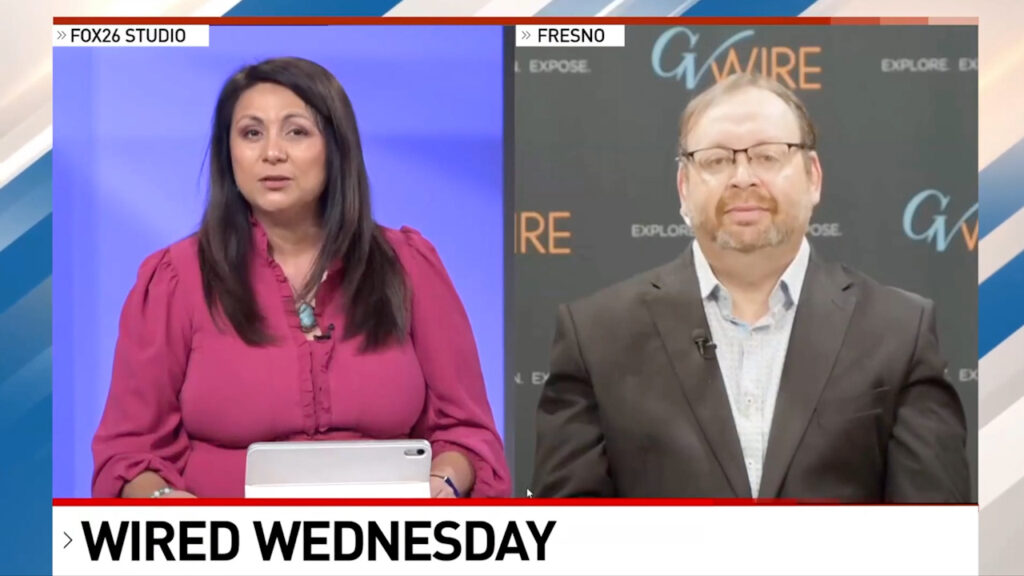California's insurance commissioner unveils a plan to address the property insurance crisis amid increasing wildfire risks. (AP/Jae C. Hong)

- New rules allow insurers to use computer modeling for future risk assessment while requiring expanded coverage in high-risk areas.
- Consumer Watchdog criticizes the plan, arguing it lacks transparency and may not lead to expanded coverage as promised.
- The plan aims to maintain a viable insurance market, crucial for California's economy and property owners facing wildfire risks.
Share
|
Getting your Trinity Audio player ready...
|
There’s no law requiring California property owners to carry insurance, but the vast majority buy it to protect themselves from fire and other perils, or are required to do so by their mortgage lenders.

Dan Walters
CalMatters
Opinion
There’s also no law requiring insurance companies to offer coverage in California, but most would prefer to do so in the nation’s most immense concentration of property needing protection.
For decades, insuring California’s homes, farms and commercial properties was a hum-drum business of willing sellers and willing buyers. However, the former have become less willing as the state experiences an ever-increasing number of wildfires — even during winter months — that devastate homes and businesses in fire-prone areas.
Last Friday, as the latest of those fires was driving people from their homes in the quaint seaside village of Malibu, Ricardo Lara, the state’s elected insurance commissioner, formally unveiled a large chunk of his plan to stem the exodus of insurers from California.
It would allow insurers to use computer modeling of future exposure to set premiums, while requiring them to offer coverage in risky communities roughly in line with their shares of the market. Until now, insurers set rates based on past losses.
Related Story: Malibu Wildfire Forces Evacuations and Warnings for 20,000, Including Dick Van ...
“Giving people more choices to protect themselves is how we will solve California’s insurance crisis,” Lara said in a statement as he released details of the modeling plan. “For the first time in history we are requiring insurance companies to expand where people need help the most. With our changing climate we can no longer look to the past. We are being innovative and forward-looking to protect Californians’ access to insurance.”
He also noted that in setting rates, insurers will be required to consider hardening efforts by threatened communities and property owners to reduce potential losses.
Lara claims support from environmental groups, farmers and other stakeholders, in addition to insurers. But he’s drawing sharp criticism from Consumer Watchdog, an organization that has sponsored landmark changes in insurance regulation. The group has also received millions of dollars in fees from intervening in insurance rates cases, and has been a harsh critic of Lara throughout his time in office.
“Full transparency is what keeps insurance rates honest but Commissioner Lara’s rule does away with that protection,” Consumer Watchdog executive director Carmen Balber said in a statement. “The rule will let insurance companies raise rates based on secret algorithms but not expand coverage as promised.”
The new rules take effect in January. Farmers Insurance, California’s second-largest property insurer, has already pledged to expand its coverage in response to Lara’s actions. The American Property Casualty Association, a trade group, also reacted positively.
“California will continue to have a robust regulatory and rate approval process that guarantees that rates reflect the actual cost of covering claims,” the association said.
Related Story: Wind-Driven California Wildfire Prompts Evacuations as It Burns Near ...
While the rules unveiled last week are central to Lara’s plans, there are other elements that remain: shoring up the FAIR Plan, California’s last ditch insurer for property owners who cannot obtain coverage elsewhere, speeding up insurance rate case approvals, and allowing insurers to include costs of reinsurance — coverage of their potential losses — in setting rates.
Adoption of Lara’s plans may result in premium increases, but maintaining a viable insurance market is a vital factor in the state’s economy. The inability to buy insurance would devastate the residential and commercial real estate market and require property owners to pay for fire losses out of their own pockets.
Lara’s plans may not be perfect, but nobody — including Consumer Watchdog — has offered a better alternative. He should be credited with at least attempting to deal with one of California’s existential crises.
About the Author
Dan Walters has been a journalist for nearly 60 years, spending all but a few of those years working for California newspapers. He began his professional career in 1960, at age 16, at the Humboldt Times. CalMatters is a public interest journalism venture committed to explaining how California’s state Capitol works and why it matters. For more columns by Dan Walters, go to calmatters.org/commentary.
Make Your Voice Heard
GV Wire encourages vigorous debate from people and organizations on local, state, and national issues. Submit your op-ed to bmcewen@gvwire.com for consideration.
RELATED TOPICS:
Categories

Florida Republicans Oppose Trump Offshore Oil Leasing Plan


















